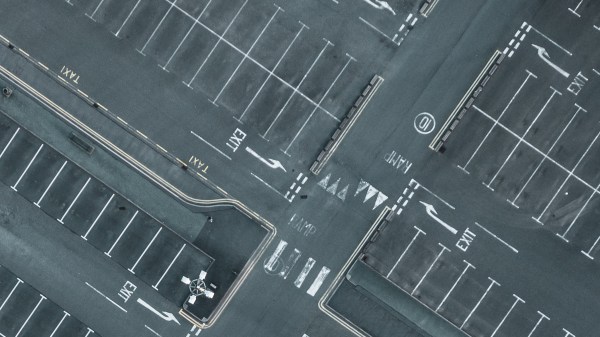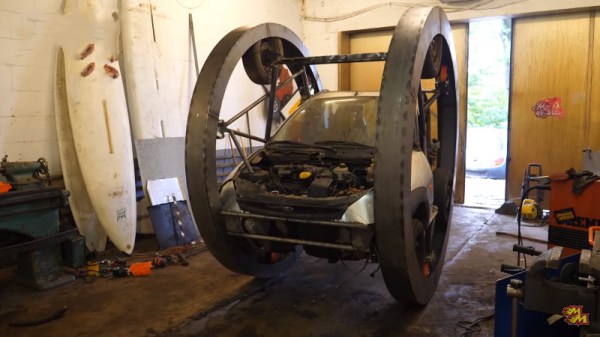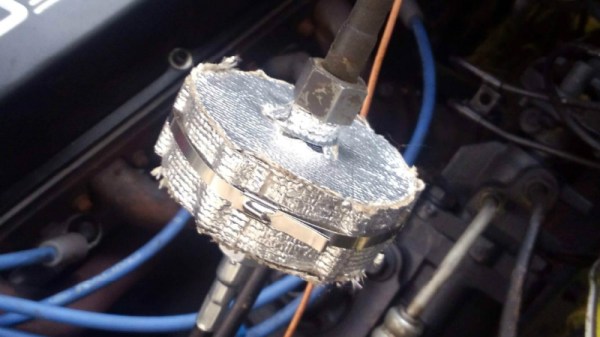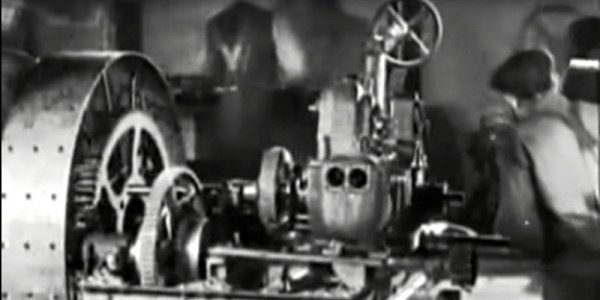Once upon a time, the automobile was a mostly mechanical beast, but no longer. Advanced electronics have weaved their way into the modern car, from engine to infotainment and climate control to the buttons now sprinkled throughout the passenger cabin. The gains in amenity and efficiency can’t be sniffed at, but it leaves manufacturers reliant on semiconductor suppliers to get cars out the door. Over the past year, it’s become much more complicated — with many automakers having to slow production in the face of integrated circuit shortages that can be traced back to Spring of 2020. Continue reading “Pandemic Chip Shortages Are Shutting Down Automotive Production”
ford37 Articles
Ford’s Powershift Debacle
In the automotive world, change is a constant, and if you’re not keeping up, you’re falling behind. New technologies and methodologies are key to gaining an edge in the market, and companies invest billions each year trying to find the next big thing, or even the next minor incremental improvement.
In just such a quest, Ford Motor Company decided to explore an alternative to the traditional automatic gearbox, aiming for greater fuel efficiency in their small cars. On paper, there were gains to be had. Unfortunately, not everything went according to plan. Continue reading “Ford’s Powershift Debacle”
What Happens To Tesla When The Sleeping Auto Giants Awake?
The history of automotive production is littered with the fallen badges of car companies that shone brightly but fell by the wayside in the face of competition from the industry’s giants. Whether you pine for an AMC, a Studebaker, or a Saab, it’s a Ford or a Honda you’ll be driving in 2019.
In the world of electric cars it has been a slightly different story. Though the big names have dipped a toe in the water they have been usurped by a genuinely disruptive contender. If you drive an electric car in 2019 it won’t be that Ford or Honda, it could be a Nissan, but by far the dominant name in EV right now is Tesla.
Motor vehicles are standing at the brink of a generational shift from internal combustion to electric drive. Will Tesla become the giant it hopes, or will history repeat itself?
Continue reading “What Happens To Tesla When The Sleeping Auto Giants Awake?”
Ford Ka Becomes Diwheel Monster
If you’ve been to the right events, you’ve seen them before – the cars with an external cage that let the car complete a somersault in the forward direction under heavy braking. They’re impressive, but it’s possible to take things even further. Enter [mastermilo82] and the RollKa.
The RollKa follows on from the RollGolf, which was a straightforward roll car build. Built around a Ford Ka, it eschews the external cage for a more radical design. The Ka has been shortened, and designed to fit within two enormous steel rims which wrap around each side of the car. Additional idler wheels have been welded to the Ka’s roof to enable it to effectively roll within the outer steel rims.
It’s a rather eccentric design, known as a diwheel. We’ve seen impressive electric versions before, but at least at this stage, this project appears to lack any advanced control systems and gets by on sheer luck and welding prowess. The build is still at an early stage, with episode three starting some early movement tests under power. It’s a testament to what can be achieved with a spacious garage and some imagination, and we can’t wait to see what happens next! Video after the break.
[Thanks to Baldpower for the tip!]
Printed Part Gets Classic Truck Rolling
When working on classic vehicles, and especially when modifying them outside of their stock configurations, things can get expensive. It’s a basic principle in economics: the rarer something is the more money somebody can charge you for it. But if you’ve got the skills and the necessary equipment, you can occasionally save yourself money by custom-fabricating some parts yourself.
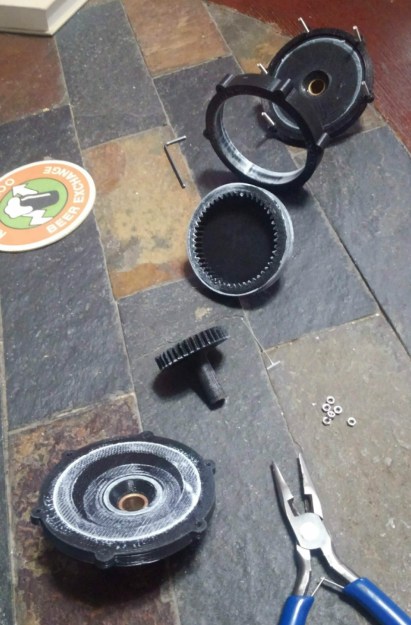 After changing the gear ratio in his 1971 Ford F100, [smpstech] needed to adjust his speedometer to compensate. Unfortunately, a commercial speedometer reducer and the new cables to get it hooked up to his dash would have run into the hundreds of dollars, so he decided to try designing and 3D printing his own gearbox. The resulting development process and final product are a perfect example of how even a cheap desktop 3D printer, in the hands of a capable operator, can do a lot more than print out little toy boats.
After changing the gear ratio in his 1971 Ford F100, [smpstech] needed to adjust his speedometer to compensate. Unfortunately, a commercial speedometer reducer and the new cables to get it hooked up to his dash would have run into the hundreds of dollars, so he decided to try designing and 3D printing his own gearbox. The resulting development process and final product are a perfect example of how even a cheap desktop 3D printer, in the hands of a capable operator, can do a lot more than print out little toy boats.
The gearbox contains a large ring gear driven by a smaller, offset, spur gear. This compact inline package drops the speed of the input shaft by 25.5%, which [smpstech] mentions is actually a bit slower than necessary, but it does give him some wiggle room if he decides to change his tire size.
Even if you’re not looking for a speedometer reducer for a nearly 50 year old truck, there are some lessons to be learned here in regards to 3D printed car parts. The first version of his gearbox, while functional initially, ended up looking like a deflated balloon after being exposed to the temperatures inside the F100’s engine bay. His cheapo PLA filament, which is probably fine for the aforementioned toy boats, simply wasn’t the right material for the job.
[smpstech] then reprinted the gadget in HTPLA, which needs to be annealed after printing to reach full strength. Usually this would involve a low-temperature bake in the oven, but he found that simmering the parts in a pot of water on the stove gave him better control over the temperature. Not only did the HTPLA version handle the under-hood conditions better, it was also strong enough that he was able to use a standard die on the connections for the speedometer cables to create the threads instead of having to model and print them. Definitely a material to keep an eye on if regular PLA isn’t cutting it for you.
This isn’t the first time we’ve seen 3D printed parts used to get a vintage vehicle back on the road. Building these custom parts would have been possible without a 3D printer, of course, but it’s a good example of how the technology can make these types of repairs faster and easier.
[via /r/functionalprint]
Ever Hear Of The Ford Cylon?
OK, we haven’t heard of a Ford Cylon either. However, there is now a Mustang Cobra out there that has been given a famous Cylon characteristic. [Monta Elkins] picked himself up an aftermarket third brake light assembly, hacked it, and installed it on said Mustang.
The brake light assembly contains 12 LEDs, which unfortunately, are not individually addressable. Additionally, by the looks of it, the brake light housing was not meant to be opened up. That didn’t get [Monta] down though. There’s more than one way to skin a cat, but he chose to use a hot knife to open the assembly, which worked quite well. A rotary cutter tool was used to cut the traces between the LEDs allowing them to be individually controlled with an Arduino. A Bluetooth module allows him to control the new brake light from his smartphone. There are different modes (including a special mode that he shows off at the end of the video) that can be selected via a Bluetooth Terminal app.
There is no schematic or code link in the video itself or the description, but [Monta] did hit the high points. Therefore, it shouldn’t be too hard to replicate.
This isn’t the first brake light hack we’ve featured. This one goes way beyond just animated lights. This one requires no programming. Rather wear your brake light? We’ve got your back(pack).
Retrotechtacular: Horseless Farming With The Ford Model B
Does everyone watch a load of videos on YouTube that are somewhat on the unadmissibly geeky side? In my case I might not care to admit that I have a lot of videos featuring tractors in my timeline. The mighty Russian Kirovets hauling loads through the impossible terrain of the taiga, tiny overloaded 2WD tractors in India pulling wheelies, and JCB Fastracs tearing around the British Fenland. You can take the girl off the farm, but you can’t take the farm out of the girl.

So my recommendations have something of an agricultural flavor. Like the video below the break, a 1917 silent film promoting the Ford Model B tractor. This one was eye-catching because it was a machine I’d not seen before, a rather unusual three-wheeler design with two driving wheels at the front and a single rear steering wheel.
During the early years of the twentieth century the shape of the modern tractor was beginning to evolve, this must have been a late attempt at an alternative. Speaking from the viewpoint of someone who has operated a few tractors in her time it does not look the easiest machine to control, that cloud of exhaust smoke surrounding the driver would not be pleasant, and the operating position hanging over the implement coupling at the rear does not look particularly comfortable or safe.
The film has a charming period feel, and tells the tale of a farmer’s son who tires of the drudgery of manual farm labor, and leaves for the city. He finds a job at the tractor factory and eventually becomes a tractor salesman, along the way meeting and marrying the daughter of a satisfied customer. He returns home with his bride, and a shiny new tractor to release his father from ceaseless labor. Along the way we gain a fascinating look at agriculture on the brink of mass mechanization, as well as the inside of a tractor factory of the time with an assembly sequence in which they appear to use no fasteners.
![[Image Source: Tractor Industry Fraud on Farm Collector]](https://hackaday.com/wp-content/uploads/2016/11/ford-tractor-company-poster.jpg)
On the staff was an engineer called Ford who lent his name to the company, but he bore no relation to Henry Ford. The company didn’t last long, collapsing soon after the date of this film, and very few of its products survived. It did have one legacy though, the awful quality of one of its tractors is reputed to have been the impetus behind the founding of the Nebraska Tractor Test Laboratory, the place where if you sell a tractor in the USA, you’ll have to have it tested to ensure it performs as it should. In their museum they house one of the few surviving Ford Model B tractors.
Meanwhile the Ford in Michigan produced their own very successful line of tractors, and their Fordson Model F from the same year is a visible ancestor of today’s machines. But as the video below shows, there’s nothing new about a fake.
Continue reading “Retrotechtacular: Horseless Farming With The Ford Model B”

